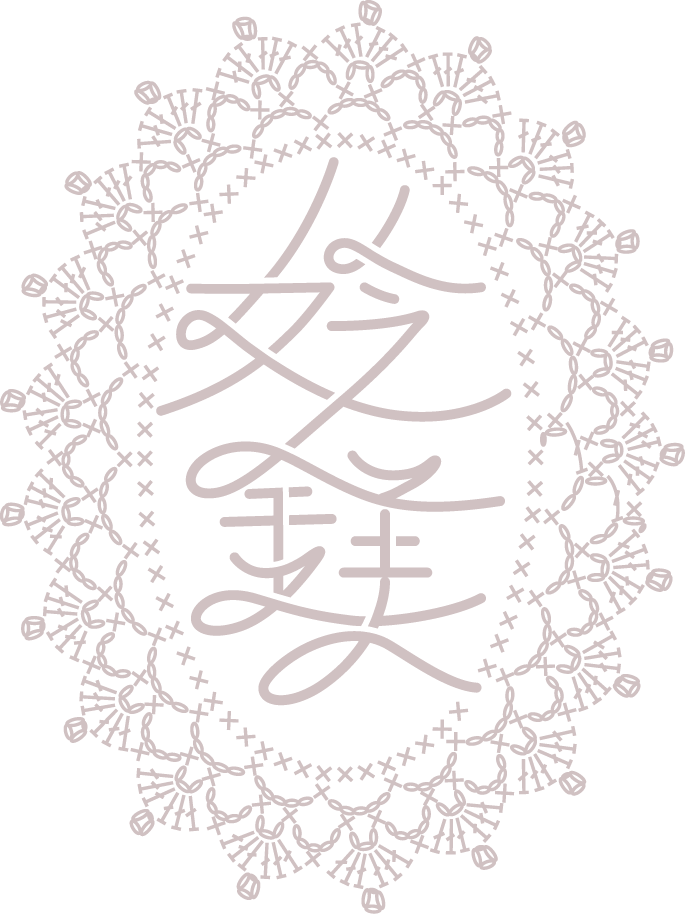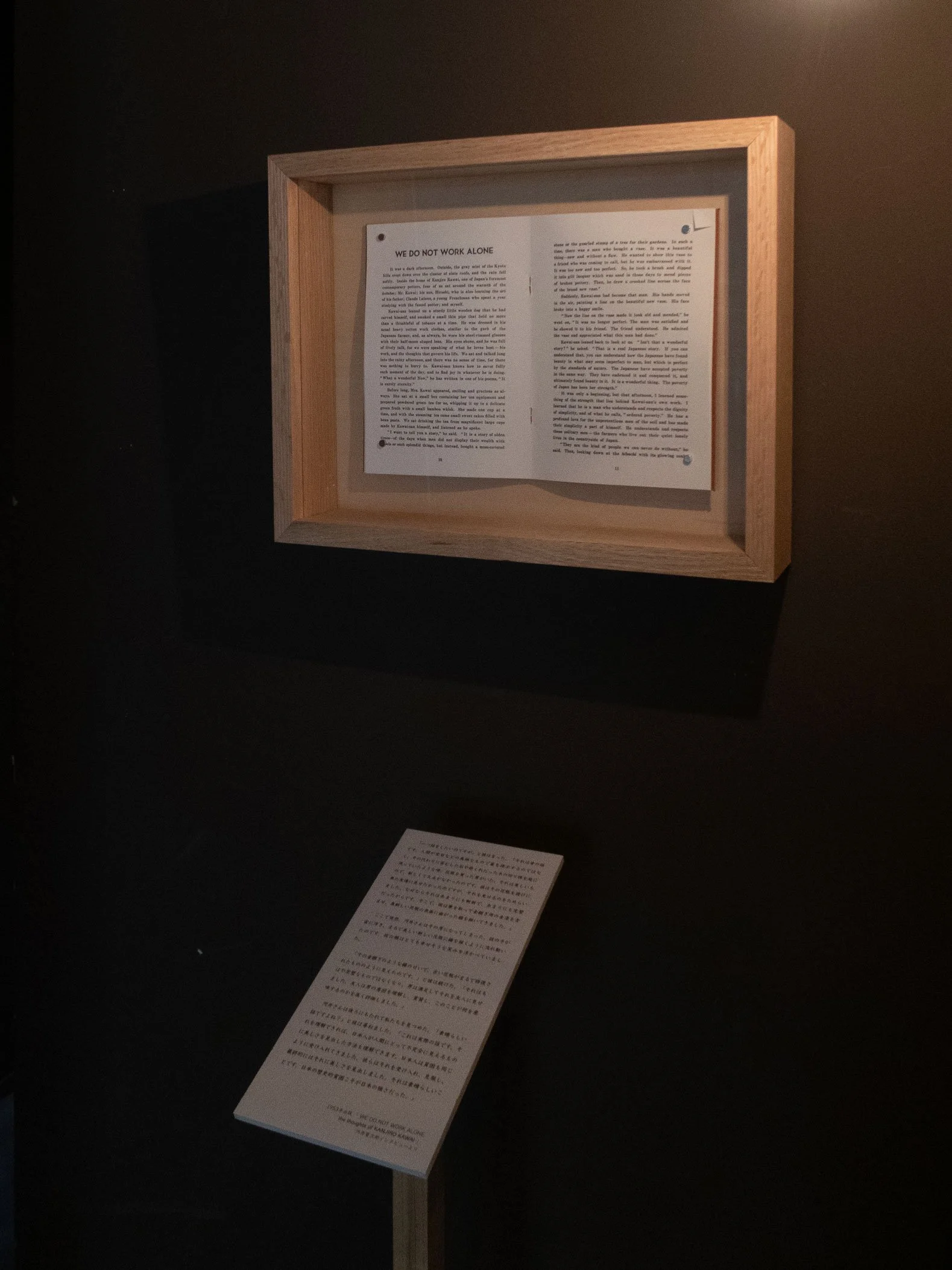「時間の無駄」
「お金の無駄」
A waste of time.
A waste of money.
Futile; in vain. Meaningless.
Like the strokes of the kanji words 「無駄」, what with its frivolous many strokes and dots. Yet the seemingly unnecessary strokes are necessary to convey its futility. Does it thus then, become necessary?
In a world where efficiency and productivity is valued, anything excess is considered 「無駄」 (to be done in vain). What happens to the human experience, which cannot be seen? If it meant nothing, then textile work created by hand would be meaningless.
In crochet, repeating the action of undoing and redoing is common in order to achieve what you want. The forgiving ability of crochet allows you a second chance. But does that mean the prior times were futile?
Using too much of your time or effort now is viewed as a waste. “Less work, more output!” Yet I revel in the fact that every part of my work has passed through my fingers at least once, taking with it a bit of me, something others might not see. The unremarkable action of winding yarn into a ball. The boring labour of repetition.
Absolutely meaningless and absolutely necessary.
‘In Vain’ was staged at Kotomath Hyogomachi in Takamatsu, Japan from 3 May - 12 May 2024.
Framed booklet “WE DO NOT WORK ALONE” and accompanying Japanese text
“I want to tell you a story,” he said. “It is a story of olden times— of the days when men did not display their wealth with jewels or such splendid things, but instead, bought a moss-covered stone or the gnarled stump of a tree for their gardens. In such a time, there was a man who bought a vase. It was a beautiful thing— new and without a flaw. He wanted to show this vase to a friend who was coming to call, but he was embarrassed with it. It was too new and too perfect. So, he took a brush and dipped it into gilt lacquer which was used in those days to mend pieces of broken pottery. Then, he drew a crooked line across the face of the brand new vase.”...
”Now the line on the vase made it look old and mended,” he went on, “It was no longer perfect. The man was satisfied and he showed it to his friend. The friend understood. He admired the vase and appreciated what this man had done.”
Kawai-san leaned back to look at us. “Isn’t that a wonderful story?” he asked. “That is a real Japanese story. If you can understand that, you can understand how the Japanese have found beauty in what may seem imperfect to man, but which is perfect by the standards of nature. The Japanese have accepted poverty in the same way. They have embraced it and conquered it, and ultimately found beauty in it. It is a wonderful thing. The poverty of Japan has been her strength.”
... I learned that [Kawai-san] is a man who understands and respects the dignity of simplicity, and of what he calls, “ordered poverty.” He has a profound love for the unpretentious men of the soil and has made their simplicity a part of himself.”
Installation view. Left: Hold (Vessel), Right: 今 Ima





Hold, 2024
Crocheted wild silk
The wild silk used was from a third-generation silk workshop based in Tokamachi, Niigata, which makes silk threads used in kimono fabric. Making use of plying methods, the artisans create threads of varying strength and thickness for different uses. This particular yarn is made from silk of wild silkworms, and appears gold under light in a dark environment.
This intricate crochet lace design brings out the natural beauty of this yarn, highlighting the dedication of the artisans working for long hours with their hands. Due to the fragility of silk, they work without a heater in cold conditions. This might seem like an unnecessary sacrifice in today’s world of modernization, yet retaining this method of making from the past is precious. The yarn gains a unique personality rather than the uniform ‘perfect’ quality of mass-production.
While this bowl is a ‘vessel’, it is unable to hold anything tangible due to its holes and fragility; the only thing it catches and holds is light, leaving the shadow flowing out beneath it.
100, 2023
An original artwork commissioned by LOUIS XIII
Sculpture, stop-motion video, printed panels
Untitled, 2024
Crocheted and melted nylon, broken ceramic
Broken ceramic find themselves in a new existence, bound to each other with melted nylon.










